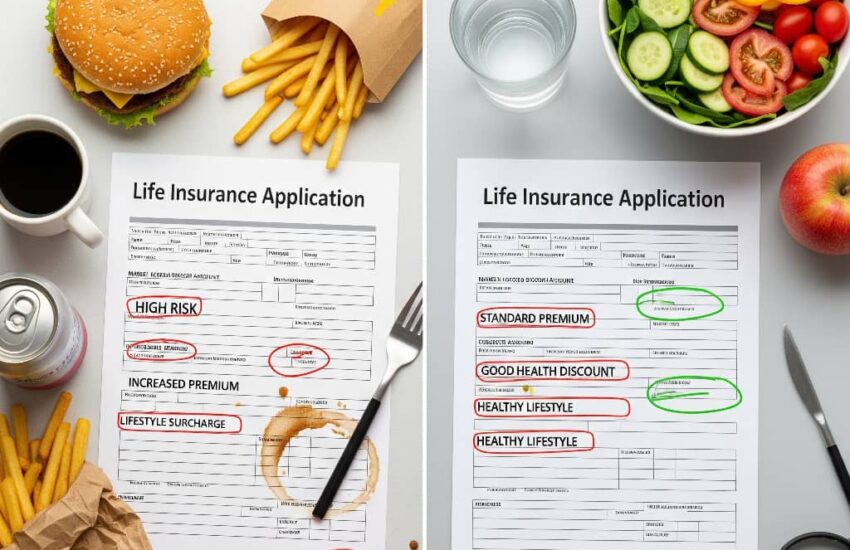Life insurance doesn’t have to break the bank. Discover smart strategies to lower your premiums while maintaining quality coverage from timing your purchase to optimizing your health profile. I’ll never forget the sticker shock when I first shopped for life insurance in my early 30s. As a healthy non-smoker, I assumed I’d get rock-bottom rates. Then the quotes came in—some nearly double what friends claimed to be paying. That’s when I realized getting affordable life insurance isn’t just about qualifying for coverage; it’s an exercise in strategic financial planning. After digging through industry reports and interviewing insurance brokers, I uncovered ways to slash premiums that nobody had mentioned during my initial search.
The first lesson came hard: *when* you buy matters almost as much as *what* you buy. Most people don’t realize life insurance premiums increase about 8-10% annually after age 30. I discovered this when comparing quotes at ages 32 and 34—the same policy cost 18% more just two years later. Insurance companies aren’t being arbitrary; actuarial tables show mortality risk rises steadily after 30. The sweet spot? Your late 20s to early 30s, when you’re young enough for low rates but likely established enough to need coverage.
Health classifications became my next focus. I’d assumed “non-smoker” was a binary category until an agent explained the tiers: preferred plus, preferred, standard plus, and standard. That 5-pound weight loss before my medical exam? It moved me from the “standard” to “preferred” category, saving me 23% annually. Small optimizations matter, lowering cholesterol by 20 points through dietary changes or avoiding alcohol for 72 hours before blood work can mean hundreds in yearly savings. One colleague reduced his premium by 15% simply by rescheduling his exam from afternoon (when blood pressure naturally rises) to morning.
Policy type makes a staggering difference. Term life insurance generally offers the best value, but even within this category, subtle choices affect cost. Annual payment discounts (typically 5-8% cheaper than monthly), choosing a level term over decreasing term, and selecting the right term length all add up. I nearly made the expensive mistake of automatically opting for a 30-year term until an advisor showed how a laddered approach, combining smaller 20-year and 30-year policies—could save me $60/month while maintaining adequate coverage during my highest-need years.
The insurance company you choose impacts premiums more than most realize. While big-name insurers spend heavily on marketing, I found regional carriers often offer identical coverage for 10-15% less. An independent broker showed me how Company A’s “preferred” rate was equivalent to Company B’s “standard plus”, meaning identical health profiles could pay wildly different amounts. This explained why my friend’s “no medical exam” policy cost less than my fully underwritten one—she’d unknowingly landed with an insurer that priced more favorably for her demographic.
Lifestyle adjustments offer surprising leverage. That rock climbing hobby I listed on my application? It added $28/month to my premium until I learned insurers typically only care about dangerous activities if you’re doing them professionally. Simply clarifying that I climbed recreationally (not competitively) removed the surcharge. Similarly, many people overpay because they don’t realize insurers usually only consider international travel risks if you’re visiting high-risk countries or spending significant time abroad.
The most counterintuitive lesson? Sometimes paying slightly more upfront saves money long-term. I nearly opted for a term policy with conversion privileges until realizing the convertible policies carried 12-15% higher premiums. Instead, I bought a cheaper pure term policy and invested the difference, a strategy that’s already outperformed the conversion option’s value after just five years.

Technology is changing the game too. Wearable fitness data can now secure discounts with some insurers, one company offers 10% off for maintaining certain activity levels tracked by your smartwatch. Others provide instant discounts for completing online health questionnaires honestly, as their algorithms can detect attempts to game the system.
The biggest savings often come from regular policy reviews. When I checked my coverage at age 36, I discovered my insurer had introduced new health categories that qualified me for an additional 7% discount. Refinancing my policy (yes, that’s possible with life insurance) saved another $300/year.
Life insurance will never be exciting to shop for, but treating it like an optimization challenge transforms the experience. By understanding how insurers calculate risk and strategically positioning yourself within their formulas, you can secure robust coverage without overpaying. The key is recognizing that the sticker price isn’t fixed; it’s a starting point for negotiation and strategic decision-making.
References
WeCovr. (2021, February 7). 20 ways to reduce your life insurance premiums 2025. https://wecovr.com/guides/20-ways-to-reduce-your-life-insurance-premiums/
Compare the Market. (2023, October 23). How to reduce life insurance premiums. https://www.comparethemarket.com.au/life-insurance/reduce-life-insurance-premiums/
ICICI Pru Life. (2023, March 31). 5 best tips to reduce life insurance premiums. https://www.iciciprulife.com/blog/life-insurance-blogs/tips-to-reduce-life-insurance-premiums.html
Commerce Trust Company. (2024, April 2). A strategy for financing life insurance policy premiums efficiently. https://www.commercetrustcompany.com/research-and-insights/articles/a-strategy-for-financing-life-insurance-policy-premiums-efficiently

